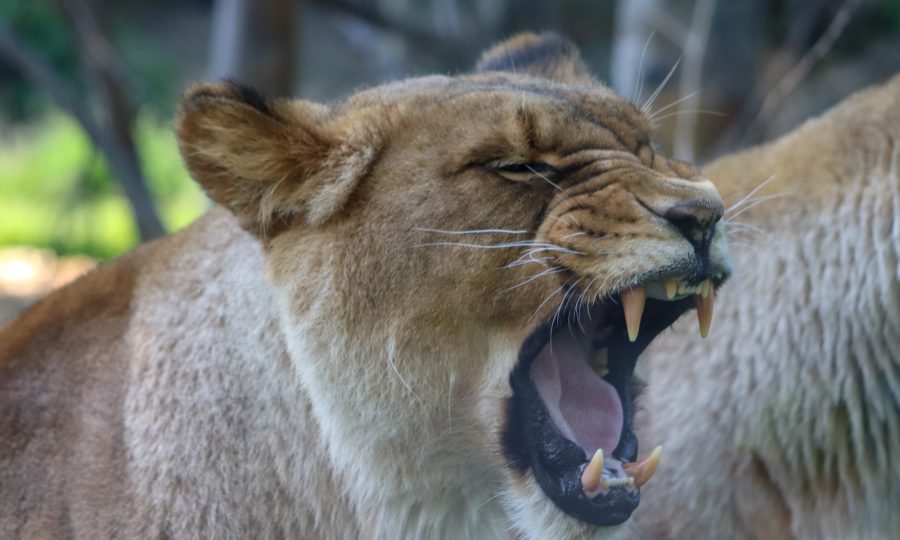Christmas is, without question, the holiday that reigns supreme in the Nordic countries, drawing people together in celebration of light, warmth and community in the heart of winter. Plus, it often comes after a long autumn period without many holidays to celebrate, so people don’t need much encouragement to put up their decorations and start celebrating their Christmas traditions.
However, over the past few decades, Halloween has started to take root as a fun autumn holiday to celebrate, especially with the younger generations. Though it likely will never come close to overtaking the popularity of Christmas in the region, the holiday’s connection to pagan traditions could make it a fitting addition, as the Nordic traditions often feature an interesting blend of Christian and pagan customs.
Read on to learn more about the Nordic holiday traditions that have been influenced by ancient local rituals, including Midsummer, Christmas and Easter.
1. Saint John’s Eve in Denmark and Norway
One of the most obvious examples of a Nordic holiday steeped in pagan tradition is Sankt Hans in Denmark and Norway. Celebrated on June 23rd, this event is Denmark and Norway’s take on midsummer celebrations and is a time to have fun with friends and family. While its name has come about thanks to Christian influence, celebrating the birth of St. John the Baptist on June 24th, it was originally a pagan celebration of the summer solstice. In both Denmark and Norway, people gather on the beach with family, neighbours and friends, enjoying good food and drink, singing songs and lighting big bonfires.
One of the most notable and intriguing aspects of Sankt Hans is the burning of straw effigies, typically shaped like witches, originally meant to keep evil spirits away and protect communities from malevolent forces, like witches and trolls. This has been practised less over the years, given the historically violent nature of witch hunts and witch trials, and even though the tradition is not directly connected to this history, some still find it in bad taste. However, it’s still a common sight to see in Denmark. In the modern day, these bonfires are ultimately a way of welcoming summer by feasting and enjoying time with friends and family.
2. Easter in Finland
Some of the traditions associated with Easter in Finland might surprise you if you’re unfamiliar with Finnish customs. While the holiday shares some familiar non-religious icons with other countries, such as eggs and bunnies, it also includes a unique practice that is connected to old pagan rituals.
On Palm Sunday, which in the Christian tradition celebrates Jesus’ arrival in Jerusalem and the crowds welcoming him as their king with shouts and waving of branches, Finnish children dress as little witches, complete with face paint and colourful scarves. They knock on doors, reciting rhymed blessings for the health and prosperity of households and handing out decorated twigs, often in exchange for small treats or coins. Interestingly, this custom is now being transferred and transposed to Halloween, a holiday which stems from Celtic pagan rituals.
The practice, known as virvonta or virpominen, has roots in a blend of pagan and Christian beliefs. The tradition of little witches relates to ancient fears and reverence for witchcraft, as well as the celebration of spring’s return and hope for a good harvest. The Christian influence comes from the tradition of hailing the entry of the king to his city and children giving blessings with branches. The combination of Christian observance with pagan customs makes Easter in Finland an interesting blend that demonstrates how a globally well-known celebration can take on localised forms and flavours.
3. Midsummer in Sweden
If there is one holiday that epitomises the influence of pagan customs on modern Nordic holiday traditions, it’s Midsummer in Sweden. It has also retained its pagan name, unlike the Danish and Norwegian midsummer celebrations, now given the Christian name of Saint John’s Eve and Saint John’s Day.
This holiday honours the summer solstice and is marked by communal gatherings, traditional dances around the midsommarstång (maypole) and large feasts featuring pickled herring, potatoes and fresh strawberries. These festive lunches and flower crowns worn by participants are meant to represent nature’s abundance and beauty, reflecting a culture that still sees the natural world as something worthy of celebration and respect.
The day’s events are centred around celebrating summer, as daylight stretches for nearly the full 24 hours in the far north. Bonfires are lit as a nod to ancient customs meant to ward off evil spirits and protect crops, like the celebrations in Denmark and Norway. The enduring popularity of Midsummer, a favourite Swedish holiday coming second only to Christmas, continues to connect modern life to its pagan past.
4. Nordic holiday traditions at Christmastime
While modern Christmas is primarily a Christian holiday, it is hard to ignore its significant overlap with older pagan traditions. Before Christianity spread across the Nordic countries, December was marked by Yule, a festival from Norse mythology and religion the locals called Hjul, celebrating the round shape of the sun at the winter solstice. In the modern Scandinavian languages, hjul and jul are homonyms, meaning wheel and Christmas, respectively. Many of today’s Christmas customs, including the Yule log, the evergreen tree and even the festivity’s timing, stem from Yule’s celebration of rebirth and light.
Yule was originally a festival that honoured the Wild Hunt, a ghostly procession through the sky led by Odin, marking the closeness of the dead and the living at the darkest time of the year. The purpose of other Yule rituals was then to make sacrifices to the gods to scare away death and evil and to celebrate the sun’s return and rebirth. In Christianity, Christmas was chosen to mark and celebrate the date of Jesus’ birth in the 4th century.
The merging of Yule and Christmas wasn’t just a coincidence; it was designed to ease the transition to Christianity for the Germanic peoples. Today, this convergence manifests in Nordic holiday traditions like candlelit processions, wreaths and holiday feasts.
5. Halloween, the new old Nordic holiday tradition
In recent years, the popular American holiday of Halloween has made its way across the Atlantic and is increasingly celebrated in the Nordic region, albeit in a more subdued way. While still seen as an imported, commercialised American holiday, its origins align surprisingly well with the region’s own history of honouring the supernatural and the changing seasons. The American holiday stems from the Celtic pagan festival of Samhain, which welcomed winter and remembered the dead, with bonfires to ward off evil spirits (sound familiar?).
Just as Easter in Finland welcomes witches, Halloween provides an opportunity to revisit the cultural legacy of spirits and folklore. In the Nordic countries, Halloween celebrations combine the traditional imagery of ghosts, witches and carved pumpkins with regional twists. For example, many communities use the holiday to share the tales of trolls, spirits and other creatures that have long haunted Nordic folklore.
Additionally, the next day, November 1st, is Alla Helgons Dag or All Saints’ Day, which is a solemn day for people in the Nordic countries to commemorate their dead loved ones by placing candles on their graves, particularly in Finland and Sweden. This makes Halloween not just an imported tradition but one that resonates with local history and beliefs and connects to other traditions of the region.
Why the persistence of paganism in Nordic holiday traditions?
Why have Nordic holiday traditions been so impacted by paganism? Through centuries, these older customs have given people a sense of where they come from and helped them feel they belong to the local community.
Paganism, as with most ancient religions, was built on the natural world and the cycles it follows. The changing light throughout the year and the importance of agricultural and seasonal markers deeply influenced the emergence of paganism, especially in the Nordic countries, where landscapes can be harsh and the contrast between dark winters and bright summers can be especially stark.
In modern life, nature is still a crucial part of Nordic culture and society. The relationship with the environment is reflected not only in festivities but also in society and politics, where sustainability and environmental consciousness are top priorities.
The reason for the continuation of these holiday traditions is not an intentional celebration of pagan customs. Instead, these traditions have become a unique part of culture and society that people enjoy, with intriguing and insightful histories that are worth learning about. Plus, the continued celebration of these traditions underscores a shared cultural identity among the Nordic countries.
To learn more about Nordic and Scandinavian culture, find our collection of blog posts here.




